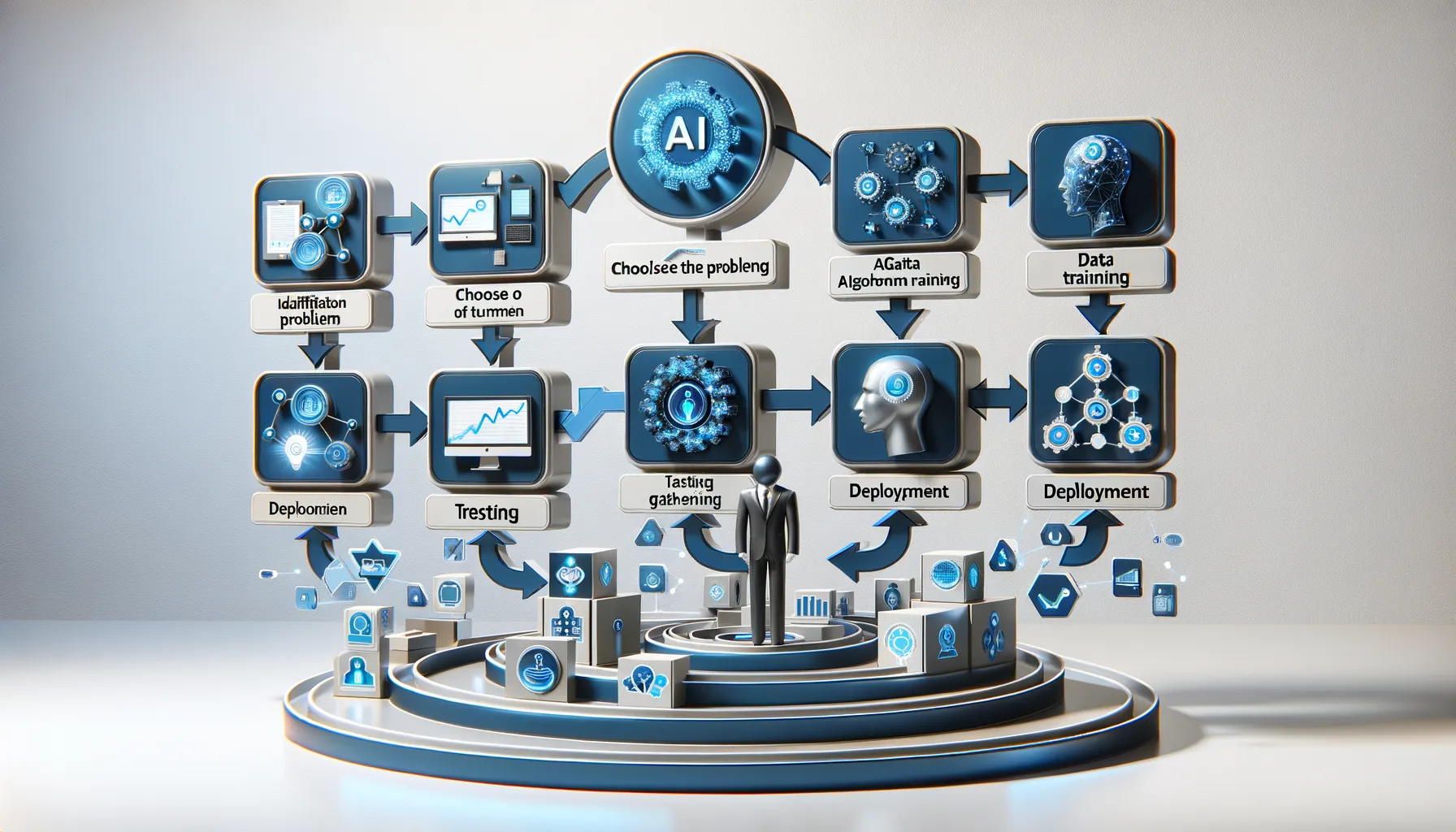Understanding the Role of AI in Business Decision-Making
How AI Transforms Decision-Making into a Science and an Art
Imagine trying to navigate through dense fog without a compass. That’s how making business decisions often feels—uncertainty everywhere, limited visibility, and pressure mounting. Enter Artificial Intelligence: your high-tech flashlight that doesn’t just illuminate the fog but shows you possible paths and even predicts where they might lead.
AI doesn’t replace human intuition; it supercharges it. Take something as routine as inventory management. Instead of relying on gut instinct or historical trends alone, AI algorithms analyze real-time data, predict customer demand, and help ensure shelves are stocked just right—not too full, not too empty. It’s like having a crystal ball that’s powered by logic rather than guesswork.
What makes AI a game-changer?
- It processes mountains of data faster than a team of analysts ever could.
- It identifies patterns invisible to the naked eye—think customer buying habits or market shifts.
- It reduces bias by offering recommendations rooted in hard data, not human prejudice or hunches.
AI isn’t just a tool for tech giants—it’s a Swiss Army knife for companies of all sizes. Whether it’s pricing products dynamically or forecasting quarterly revenue, this digital powerhouse takes decision-making to the next level.
Key AI Tools and Technologies for Decision Optimization

Unpacking the Power Players in AI Decision-Making
Imagine having a crystal ball for your business, but instead of a misty orb, it’s powered by cutting-edge AI tools and technologies. These tools are revolutionizing how businesses make decisions, moving from guesswork to precision. Let’s peel back the curtain on some of the standout players.
First up is Machine Learning (ML), the brain behind many AI systems. Think of ML as a coach that learns from historical data to suggest winning plays. Whether predicting customer behavior or optimizing supply chains, it unravels patterns no human mind could catch at scale.
Then come Natural Language Processing (NLP)
These aren’t just tools; they’re game-changers, reshaping how we navigate today’s complex business landscape. So, you’re ready to let artificial intelligence revolutionize your decision-making? Buckle up—it’s an exciting ride that requires both strategy and a bit of curiosity. Unlike flicking on a light switch, implementing AI is more like planting a tree: step-by-step, with care. First, pinpoint where your company struggles. Is it forecasting demand? Identifying risks? Start by asking, “What’s our pain point?” You don’t need AI for everything, just where it *truly* matters. Next, gather quality data—because feeding AI messy information is like asking a chef to create a masterpiece with spoiled ingredients. Build or clean your data sets to ensure clarity and relevance. Now, here’s where things get real: choose your tools. From platforms like TensorFlow to user-friendly solutions such as DataRobot, there’s something for every skill level. Need a shortcut? Look for pre-built AI models tailored to your industry. Still feeling unsure? Let these guiding steps make it a breeze: Every successful AI journey starts with action. Take the step—it’s worth it. Imagine having a crystal ball that doesn’t just predict the future but helps you shape it. That’s the power of AI in strategic decision-making. By analyzing staggering amounts of data at unimaginable speeds, AI reveals patterns humans might never spot. It’s like having a team of detectives working 24/7, uncovering insights about market trends, customer behavior, and competitors’ moves. For example, think of how AI can guide a retailer in pricing decisions during holiday seasons or help manufacturers decide which products to prioritize based on real-time demand. AI doesn’t just recommend; it empowers you to think sharper and act faster. With AI: AI isn’t just for boardroom strategies—it shines in the trenches too. From automating repetitive tasks to optimizing supply chains, AI ensures efficiency flows like a well-oiled machine. Picture this: a logistics company uses AI to reroute deliveries during traffic jams. That’s time saved, customers impressed, and costs cut. Not to mention, AI-powered tools like chatbots or virtual assistants streamline communication, ensuring teams stay focused on what truly matters. It’s not about replacing people but amplifying their abilities to achieve more. Picture this: you’re surfing on a vast ocean of data, trying to catch that perfect wave. That’s what businesses tapping into AI for decision-making are experiencing today. The future of AI is breathtakingly dynamic, yet as thrilling as it is, it’s also unpredictable. Emerging trends like explainable AI (XAI) are stepping into the spotlight. Why? Transparency matters! Companies want AI to justify decisions in plain language, not cryptic algorithms. There’s also a surge in personalized AI systems tailored for individual organizations, moving away from one-size-fits-all solutions. Imagine your AI knowing your business just as well as you do—how powerful would that be? But here’s the catch: the more tailored it becomes, the more complex it is to train and maintain. As AI grows smarter, ethical dilemmas emerge. Who is accountable if an AI-driven choice leads to failure—or worse, harm? With great power comes great responsibility, right? Here’s the kicker: no matter how advanced AI gets, scaling its use across global enterprises isn’t a walk in the park. Think of it as trying to fit the pieces of an ever-expanding puzzle. Data integration from legacy systems presents headaches, especially for older companies trying to modernize. Then there’s the issue of talent. Skilled AI engineers are like diamonds—rare and costly. Businesses venturing into AI must invest in both tech and human expertise. Don’t forget cybersecurity, which looms like a shadow over all technological progress. Protecting sensitive business data while keeping AI systems accessible is a tightrope act. The race for innovation is heating up, but remember: speed without strategy could lead to chaos. Businesses have a unique chance to shape this AI-driven future, but the road ahead demands both grit and grace.Steps to Implement AI in Business Decision Processes

Breaking Down the Process of Integrating AI
Benefits of Using AI for Strategic and Operational Decisions

Transforming Strategic Thinking with AI
Elevating Everyday Operations
Future Trends and Challenges in AI-Driven Decision-Making

Riding the Wave of AI Evolution
The Challenge of Scaling Intelligence
